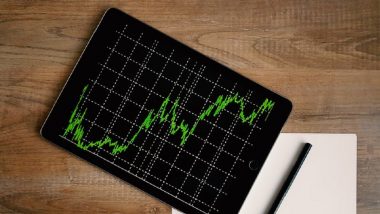From investing in stock market to day trading, there are lots of trading avenues to explore. Every type of trading has its advantages as well as its pitfalls. In reality, there are many forms of trading. Some offer greater prospects than others. Choosing which direction you want to take requires careful planning and good trading knowledge.
So, let’s explore the different types of trading and how you can pick a viable trading floor for you.
Foreign Currencies
Forex (the foreign exchange) lets you buy and sell foreign currencies. It can be incredibly lucrative and profitable for those with a solid trading strategy. This type of trading can be great for those looking for short and long-term trading opportunities.
Commodities Trading
Commodities are broken down into raw materials, such as oil, gold, corn, metals, and more. This type of trading can be hugely popular and is often the perfect choice for long-term traders. You can also look at CFD commodities which is a derivative that lets traders speculate on the price movements. CFD can be great for commodity traders who want more options available to them.
Cryptocurrency Trading
Cryptocurrencies and ETFs tend to be a little more flexible and offer short and long-term prospects for traders. While cryptocurrencies can be quite volatile (as it depends on demand and popularity), there is more liquidity available. Of course, this is a fast-moving market, so you have to keep informed of the latest market changes.
Stock Trading
The stock market lets you trade shares in publicly listed companies. Prices can fluctuate based on many factors, including a company’s apparent value and supply and demand. Stocks and indices are often thought of as a ‘middle of the road’ solution for traders since they tend to be safer. Of course, there are no guarantees with trading and a reputable broker is a must.

Day Trading
This is fast-paced trading at its best and involves buying and selling securities several times on the same trading day. It’s a popular type of trading that deals with short-term price movements in the markets. It’s great for traders who are confident and want to earn profits quickly. Of course, this type of trading tends to come with greater risks. There are also multiple markets available for day trading. You do, however, need to have a solid strategy in place to succeed.
Buy and Hold Trading
Buy and hold is a passive type of trading. It is popular among newcomers and experienced traders and involves you buying ETFs and stocks and holding onto them for a prolonged period. Whether the market fluctuates positively or negatively, you hold onto the stocks for a specific time in hopes of seeing an impressive profit. This is the ultimate waiting game but can be hugely rewarding – if you can hold your nerve.
Should You Stick to One Type of Trading?
There is no harm in being an expert in several trading markets. It can be hugely beneficial, especially when you want to diversify and expand your portfolio. Of course, beginners may find it easier to focus on one market or type of trading until they have the experience to manage more. It really depends on what is comfortable and manageable for you.
Technical Trading
This is often classed as a ‘specialized’ field of trading. Technical trading focuses on historical price data and charts to make trading decisions. It focuses on the analysis of market trends, patterns in pricing, and the volume of trading. Meta Trader 4 could help you analyze the markets whereas Autochartist can scan and alert you to new opportunities in the market.

Always Have a Viable Trading Plan
Trading plans are crucial for traders who want to be successful. It doesn’t matter how much experience you have, your trading style, or the type of trading you prefer, you cannot succeed without a plan. This is something you must focus on and hone over the years. The reason is simply because it keeps the water clean.
You don’t act on emotions, but rather logical decisions based on analytical evidence. You’re following a trading plan and using a strategy that is tried and tested. It can always be tweaked and updated as and when necessary.
Know the Type of Trader You Are
Let’s be honest, not all markets or types of trading will work for you. Some are better for aggressive traders while others are for those who like to play the long game. Once you know what type of trader you are, it’ll be much easier to pick an avenue.
For example, penny stocks are incredibly popular and are ideal for aggressive traders. Commodities and ETFs, however, suit a range of traders. Knowing who you are as a trader will make it easier to determine your best trading route.
Determine What’s Best for You as a Trader
It’s important to think about what each type of trading has to offer. For instance, day trading requires you to make several small trades in a limited window. It can require a more hands-on approach to keep up with market movements, and you only need to work 2-5 hours each day. Not being able to commit that time, however, can cause you to lose out or make hasty decisions.
On the other hand, long-term commodity investments might work more favorably for you since you don’t have to keep regular hours. Of course, it all comes down to what works best for your situation and your style of trading.
Find the Best Avenue for You
There are many types of trading, including day trading, commodities, foreign currency, cryptocurrencies, and more. Getting to know what each has to offer can be crucial so that you can pick a trading floor that works best for you. You must choose a style of trading that matches your lifestyle, skill level, and capital limitations.
(All articles published here are Syndicated/Partnered/Sponsored feed, LatestLY Staff may not have modified or edited the content body. The views and facts appearing in the articles do not reflect the opinions of LatestLY, also LatestLY does not assume any responsibility or liability for the same.)













 Quickly
Quickly





















